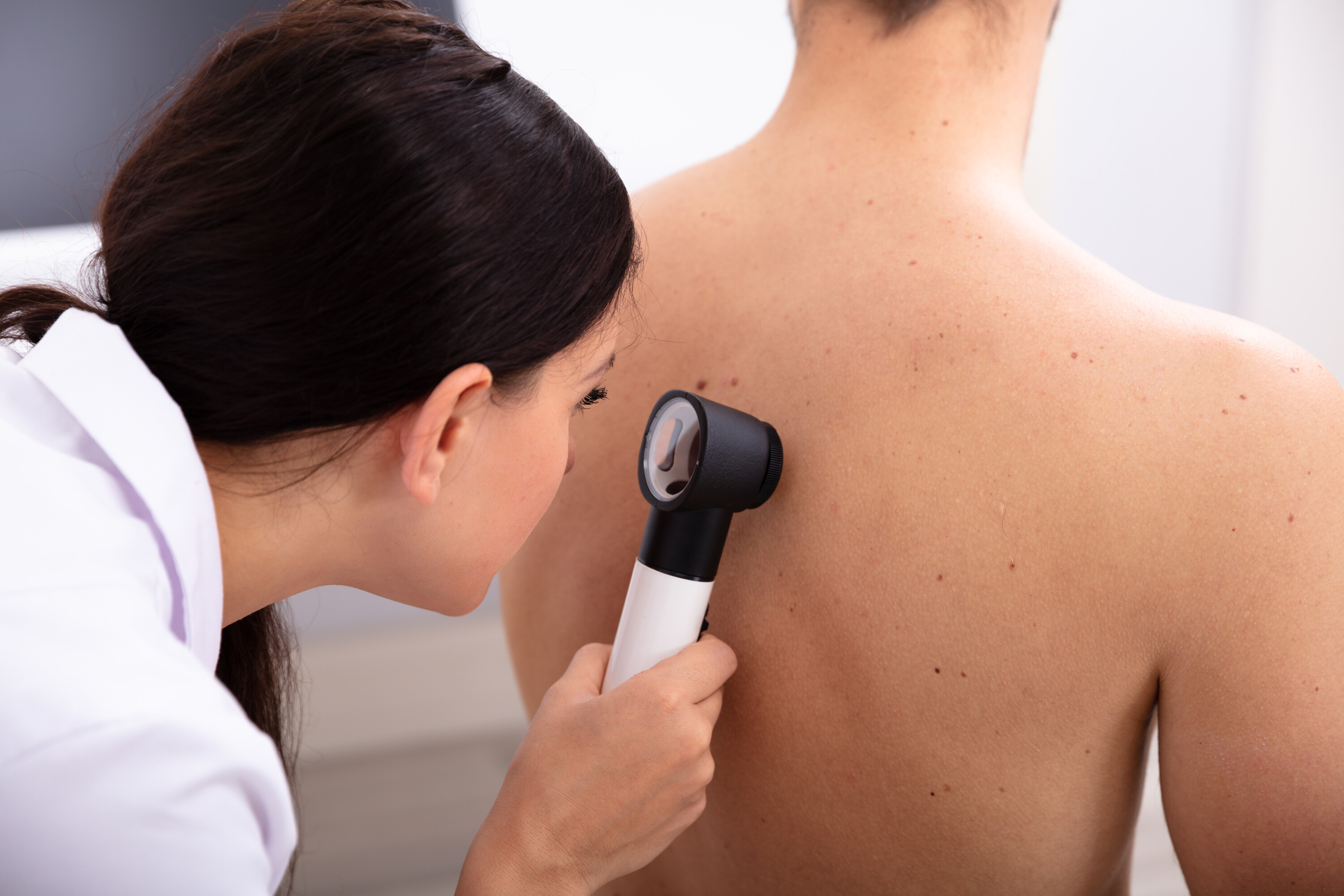Skin Cancer: What you need to know
Being out in the sun is good for you. Sunshine improves your mood, helps you sleep and provides vitamin D to strengthen bones and the immune system. A walk in the sun can even lower blood pressure. However, being out in the sun too long and without protection can also put you in danger of developing skin cancer. About one in five Americans will develop skin cancer in a lifetime. When detected early skin cancer can be successfully treated, so it is wise to be aware of these skin cancer basics from the American Academy of Dermatology.
Four types of skin cancer
- Actinic Keratoses are dry, scaly patches on the skin that are actually precancerous growths. They frequently form on areas that get lots of sun exposure like the head, neck, hands or forearms. Since these patches can progress to more serious forms of skin cancer, it is best to have them treated.
- Basal cell carcinoma is the most common form of skin cancer. It looks like a flesh-colored or pinkish patch of raised skin that doesn’t go away. It is commonly found on the head, neck or arms but it can appear anywhere. It is important to have basal cell carcinoma treated because it can invade the surrounding tissue and grow into the nerves and bones causing damage.
- Squamous cell carcinoma looks like a red firm bump, a scaly patch or a sore that heals and re-opens. This type of cancer tends to form on the rim of the ear or on the face, neck, arms, chest and back. Squamous cell carcinoma can grow deep in the skin so it is important to have it treated early so it does not spread.
- Melanoma is the deadliest form of skin cancer. It develops in a mole or appears as a new dark spot on the skin. Check moles for asymmetry, border irregularity, uneven color, a size larger than a pencil eraser or changes in size, shape or color. If any of these occur, seek treatment. About 20 American die each day from melanoma but if it is caught early, the survival rate is 99 percent.
Risk factors for skin cancer
The basic risk factor is exposure to natural and artificial ultraviolet light. All skin types are affected but people with fair skin that burns easily are more susceptible. Indoor tanning beds increase the risk of melanoma. A tan is actually a sign that your skin has been injured. As this damage builds up, the risk of developing skin cancer is increased.
Steps to reduce skin cancer risk
- The sun’s rays are strongest between 10 a.m. and 2 p.m. so don’t be out during this time without protection. If your shadow is shorter than you are, look for shade.
- Wear protective, lightweight clothing in the sun as well as a hat and sunglasses.
- Apply a broad-spectrum, water-resistant sunscreen with an SPF of 30 or higher. Broad-spectrum refers to protection from both UVA and UVB rays. The water-resistant aspect is important since the sunscreen will stay in place even if you sweat or get wet. However, most of the time, the water-resistance only lasts for 40 to 80 minutes so reapply as needed. Put on sunscreen when you go outside, even if it is a cloudy day. Rub sunscreen on all exposed skin, including the tips of your ears, your neck and the tops of your feet.
- There are two basic types of sunscreen on the market: physical sunscreen and chemical sunscreen. Physical sunscreen sits on top of the skin and reflects the rays. This is especially effective for sensitive skin. Look for the words zinc oxide and titanium dioxide in the ingredients. Chemical sunscreens work more like a sponge and absorb the sun’s rays. Look for oxybenzone, avobenzone, octisalate, octocrylene, homosalate and octinoxate in the ingredient list. Chemical sunscreens rub into the skin better than physical sunscreens.
- Be very careful near water, snow or sand since they reflect the damaging rays of sun, which increases the chances of damaging your skin.
- Avoid tanning beds. If you need to look tan, consider using a self-tanning product.
Putting your health first
Being proactive about your well-being by wearing sunscreens, eating wisely, exercising and getting regular checkups are all paths to a healthy lifestyle. Choosing to make your health needs a priority makes it possible for you to be there for your family and friends for years to come. When the need for a medical procedure or an unexpected medical event does occur, continue to seek the best care possible by choosing to recover in a short-term care facility where a team of professionals work together to get you back to your active lifestyle as quickly as possible.
When you want the best, you need to choose the best. Whitehall of Deerfield is the North Shore’s premier option for rehabilitation and has consistently received Medicare’s highest rating in Medicare’s five-star rating system of nursing and rehabilitation centers, as well as receiving U.S. News & World Report’s highest “Top Performing” rating.
When it comes to care, few can match Whitehall of Deerfield’s full range of therapies targeted to meet each guest’s individual needs. A clinical nurse liaison completes an assessment to discover areas that need attention. Then physical, occupational and speech therapists work one-on-one with guests seven days a week. There is also a respiratory therapist on staff who works with guests one-on-one and helps manage care to avoid re-hospitalization.
All of this top-notch care is offered in a luxurious setting. Healthy meals are served in beautiful dining rooms or in the privacy of your well-appointed room. Attentive concierge service, a Wellness Spa, valet parking for visitors and other world-class amenities help provide a positive recovery experience. To see all that is offered, arrange a tour by calling 847-945-4600. For more information, visit whitehallofdeerfield.com.

